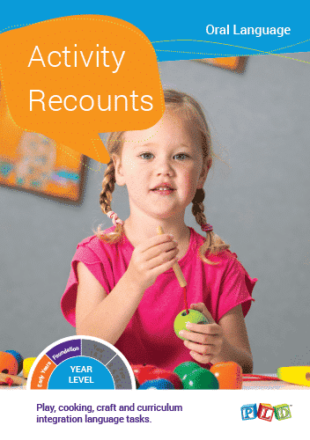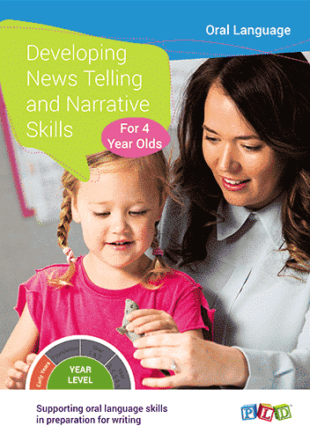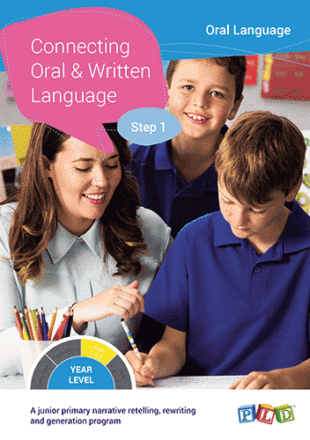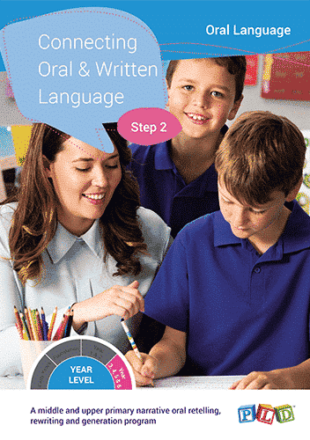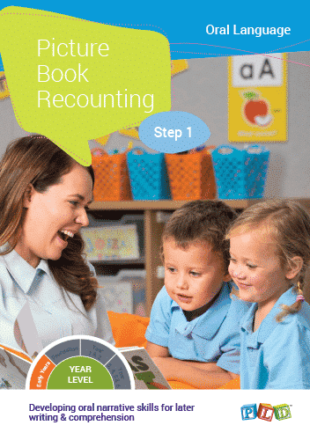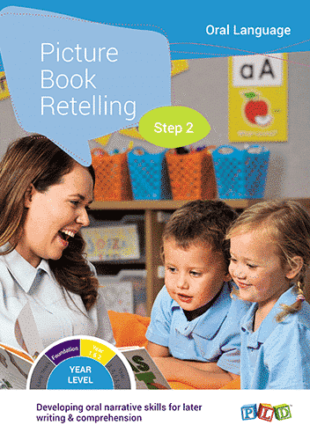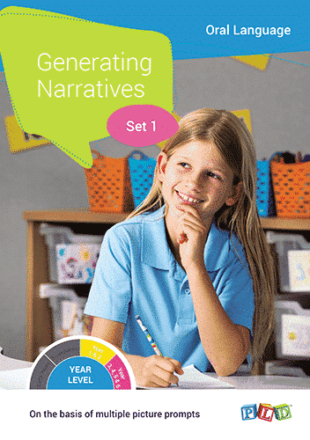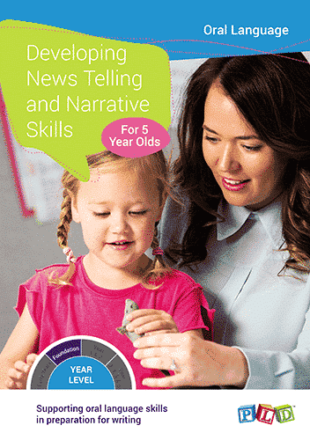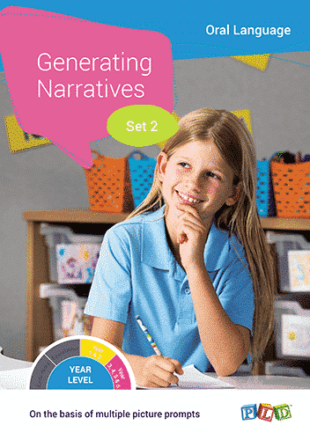How to support the language development of children with English as a Second Language, also known as ESL and bilingual students? Learning to communicate using language is a remarkable achievement of early childhood. The progression of language development is very similar across children and even across languages. All children regardless of the language spoken begin their journey of communication with a focus on sounds and engage in behaviours such as cooing and babbling. Over time they develop words, put words together into short phrases and finally, develop complex, grammatically complete utterances and engage in conversation.
Although the course of language development may be very similar, the rate of development varies widely between children. Although children need only to be exposed to language through conversation and interaction in order to acquire language, many children may not experience enough conversational interaction to maximise their language development. The quality and quantity of a child’s language experience, as well as an individual child’s capacity to make use of the experience, will impact the rate at which their language skills develop.
Does bilingualism cause language delays?
Many people express concerns that children exposed to multiple languages find it harder, more confusing or develop language slower than those who are learning just one language. However those concerns are ungrounded.
Speaking two or more languages is actually the norm around the world. It is not confusing, slower or harder for children to learn multiple languages. Most children, both monolingual and bilingual/multilingual, develop speech, language and communication skills without any problems.
Kathryn Kohnert, an academic in the area of language disorders in bilingual children, suggests that the experience with two different languages does not cause language development problems. In fact regular experience with two languages is linked to social and cognitive advantages. While bilingual children may develop their language abilities differently, bilingualism does not cause confusion.
A percentage of all children, monolingual and bilingual, will be slower to talk. Kohnert describes these children as late talkers or late bloomers. This is the 15% of otherwise typically developing 2-year-olds who don’t have the expected vocabulary (50-100 words) nor are they using the expected 2-3 word combinations. About half of this group will catch up by 3 years of age, hence the term late bloomers. However the rest present with persistent delays in the development of speech, language and communication.
So while some bilingual children may have a speech or language delay, it is not caused by their bilingualism and will usually occur in all their languages. There is no evidence in the research to drop a language even if a child has developmental disorders and language delays.
If milestones are being achieved in a child’s first language or languages, it is only a matter of time until the child transitions into English, the dominant language of instruction. If however the child has a reduced vocabulary and speaks with immature (non-adult-like grammar) in their first languages, the transition to English and literacy is likely to be more complicated.
How do the language development of ESL and bilingual students and multilingual children differ?
When considering the language development of children it is more important to focus on the progress of language development than to focus purely on ages and stages. Is the child progressing through the stages of language development? Are they learning new words and sounds? Are their language skills growing?
There are two ways in which multiple languages may be learned. The first is simultaneous bilingualism in which the child develops both languages from birth. In contrast sequential bilingualism is where one language is learned first and the second acquired later, for example English as a second language.
1. Simultaneous Bilingualism
Children who are developing several languages simultaneously will achieve the same fundamental milestones in language development: cooing, babbling, first words, word combinations. However both languages may be used interchangeably, there may be a blending or mixing of the languages. For example, children may blend parts of words from both languages into the same word, or they may use words from both languages within the same sentence. Over time they will begin to differentiate between the two languages and recognise them as separate systems and use for different purposes and with different people.
2. Sequential Bilingualism
Acquiring a second language is a distinct process compared to developing a second language. When children are learning a second language, they will draw on knowledge from their first language and create their own pace of language development. It is therefore more important to look at the stages of development rather than ages.
ESL and bilingual students who are developing several languages simultaneously will often mix the languages. They are developing two different vocabularies and if they don’t have the word they need in one language, they will compensate by using a word from the other language. This language mixing is a normal part of development.
Another difference is in vocabulary size. If each language is considered separately, it may appear the child has a smaller vocabulary, but when the languages are considered together, the total vocabulary is equivalent to a larger vocabulary. This is called conceptual vocabulary.
If a child is at school where the primary language is different to the one spoken at home, there may be a period where the child stops talking. This is not because they are confused. Language immersion is the easiest and quickest way to learn a language. Children will initially listen and take everything in. Eventually, ESL and bilingual students will start to speak and will catch up quickly.
Should a child be encouraged to speak just one language to encourage language development?
All the experts in the field of bilingualism stress the importance of maintaining the home language. This is the language vital for emotional and behavioural regulation as well as family and cultural connectedness. Bilingual children should develop and consolidate their home language so they feel connected to their family, culture and heritage. It is not appropriate to restrict a child to a single language, especially a language other than their first. Seeing bilingualism as a gift to be nurtured is ideal and recognising that language development needs to be viewed holistically and across all languages is important.
Strongly focusing on only one language can lead to language dominance in bilinguals, and schooling has a strong influence on language dominance. However, the language of home is always encouraged. Even if a child has developmental disorders or language delays, there is no evidence to support the dropping of a language. The ideal way to support such children would be to provide support and intervention in both languages which may mean training parents in techniques to encourage and support language development.
ESL and bilingual students may require explicit teaching to support the development of English. They will also require time, a chance to practice and real social experiences to support the language learning process.
Irrespective of whether a child is bilingual or monolingual, all children need a high-quality, language-rich environment and opportunities to use language to communicate and connect within social situations.
How can we assist students with English as a second language?
There are five stages in the acquisition of a second language, and at each stage there are specific ways we can support children as they move toward language fluency.
1. Silent or Receptive Phase
At this stage students dedicate time to learning the vocabulary of English. They may be silent, or there may be some talking happening as they practise saying new words, however they don’t yet produce the second language (English) with fluency or comprehension.
How to support language in this phase: it is essential to provide a rich, meaningful language environment, exposing children to English and modelling language. Teachers can support a child’s understanding of new vocabulary and language by using visual and concrete models. Using real objects and simple language (i.e. words and short sentences) when interacting with children at this stage will help them make connections between words and their meanings. Allowing children to listen and watch without pressure to speak is important at this stage. As discussed previously, language immersion is the easiest and quickest way to learn a language, and the children will catch up given time. PLD’s resource “10 Minute Language Games” could be used to expose children to age-appropriate vocabulary with the support of pictures and real objects.
2. Early Production
During this phase the child begins to develop a vocabulary of new words. They start to say words and even short phrases in the second language.
How to support language in this phase: as children may begin to comprehend written material at this stage, expose them to simple written texts with illustrations to help develop their understanding. PLD’s “Comprehension Questions” range is a great resource for supporting the understanding of language using age-appropriate picture books. In addition, it is also important to support a child’s development of new vocabulary. PLD’s range of Semantics resources are ideal to encourage the development of vocabulary within themes.
3. Speech Emergence or Production
By now the child has developed a vocabulary of several thousand words. Their understanding of the new language is increasing and they can now communicate using short phrases and sentences. They may also be beginning to read and write in their second language.
How to support language in this phase: providing meaningful, functional opportunities for children to express themselves is important. In addition, providing opportunities to practice language through both spoken and written mediums will support the development of correct sentence structure and grammar. The following PLD resources may assist in providing opportunities and scaffolding for children to practice both their oral/spoken and written language skills:
4. Intermediate Fluency
In this stage, children begin to communicate using complex sentences which include conjunctions to sequence and connect related clauses. True conversations begin to emerge and children may even begin to think in their second language.
How to support language in this phase: as children use their second language for meaningful purposes, their second language proficiency will continue to deepen. An ideal activity at this level is targeting narratives, both fictional (retell or generated) and personal (news, journals etc), to ensure children are able to express their thoughts and feelings in a connected manner. The following PLD resources are ideal for supporting narrative:
5. Continued Language Development or Fluency
This final stage may last for an extended time as children continue to develop fluency in their new language, achieve accuracy and increasing complexity and understanding of the social use of language (pragmatics).
How to support language in this phase: children need continued practice and exposure to allow the consolidation of the second language. Teachers can provide language scaffolding within curricular content-based learning.
In Conclusion…
All children, whether bilingual or monolingual, need a high-quality, language-rich environment and opportunities to use language to communicate and connect within social situations. A child’s first language, the language of home, is vital for a child to feel connected to their family, culture and heritage. We need to recognise bilingualism as a gift to be nurtured and understand that language development needs to be viewed holistically and across all languages. Language immersion is the quickest and easiest way for children to learn a second language. If we provide a rich language environment with quality models of vocabulary and opportunities to practice, bilingual children will develop proficiency in the language of instruction (English) given time.



 print
print